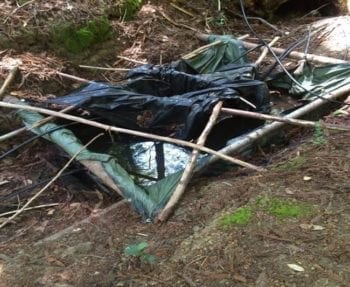State to provide $1.5M for environmental clean-up of illegal cannabis grow sites
 Illegal marijuana grow operations have ravaged the North’s Coast forests, leaving extremely polluted waterways and clear-cut wastelands. We are very glad to hear that the state is providing $1.5 million to fund environmental cleanup of these sites through their Fisheries Restoration Grant Program. Pesticides, generators and fuel containers, water diversions, tree removal, and animal traps are often cited amongst the causes of the damages, which can include impacts to waterways and wildlife.
Illegal marijuana grow operations have ravaged the North’s Coast forests, leaving extremely polluted waterways and clear-cut wastelands. We are very glad to hear that the state is providing $1.5 million to fund environmental cleanup of these sites through their Fisheries Restoration Grant Program. Pesticides, generators and fuel containers, water diversions, tree removal, and animal traps are often cited amongst the causes of the damages, which can include impacts to waterways and wildlife.
With a regional office in Arcata, CalTrout has been involved in watershed restoration and protection of these lands on the North Coast for many years. One of our Keystone Initiatives focuses on the Eel River, a majestic river that once had huge runs of salmon and steelhead. But now, the river’s flows have been reduced significantly, owing much to illegal water diversions. This causes impairment to summer rearing habitat for fish. Recently, CalTrout developed the Eel River Forum and through that, the Eel River Action Plan which identifies priority actions needed to recover the Eel River watershed and its native fish. (Learn more about this initiative.)
Assemblymember Jim Wood, who represents the North Coast counties, made the announcement for these funds in a press release, attached below. Hats off to Jim for working relentlessly on this issue and for being a champion to the environment.
Photos courtesy of California Department of Fish and Wildlife, showing an illegal grow site with chemical ponds and disposed butane canisters.
Assemblymember Jim Wood’s press release announcing the cleanup funds is below.
[gview file=”https://caltrout.org/wp-content/uploads/2017/05/marijuana-cleanup-jim-wood-press-release-may-2017.pdf”]






